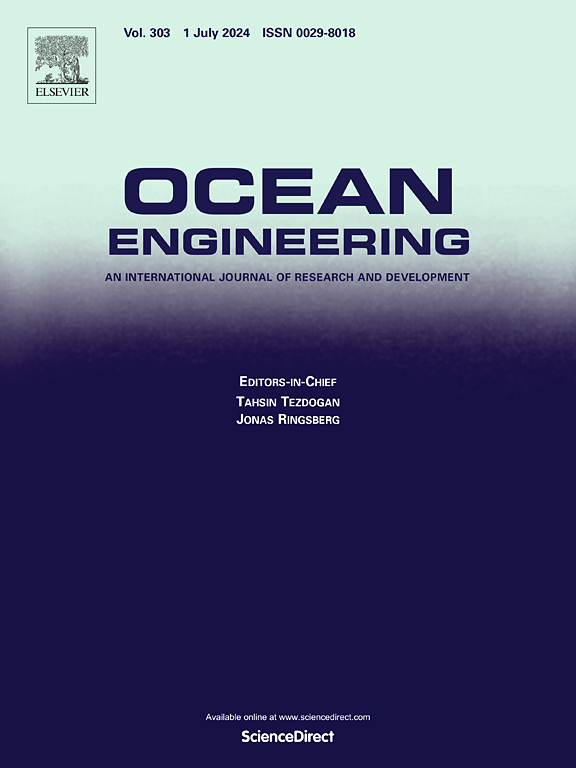Analysis on flow-induced transverse vibration and pivoted rotation of a trapezoidal prism with single degree of freedom
IF 4.6
2区 工程技术
Q1 ENGINEERING, CIVIL
引用次数: 0
Abstract
Two types of flow-induced vibration (FIV) of a trapezoidal prism, namely the transverse vibration and the pivoted rotation, within a Reynolds number (Re) range of 0.7 × 104 to 5.6 × 104 have been numerically studied in the present work. The FIV experiences the vortex-induced vibration (VIV) and the galloping circumstances as Re increases, and the vibration response characteristics and flow energy harvesting capability of different FIVs are discussed. In the VIV-galloping transition stage, the trapezoidal prism exhibits a much larger amplitude than the square prism. Upon entering the galloping branch, an amplitude self-limiting phenomenon occurs in the pivoted rotation, with the trapezoidal prism displaying a much lower amplitude. The related lift and drag forces, as well as the flow structures, especially the wake vortex patterns influenced by the cross-section shape, at different FIV stages, are analyzed in detail. In the low Re range, the trapezoidal prism demonstrates better energy harvesting capability over the square prism and the maximum conversion ratio of flow energy into the vibration energy is found during the transition from VIV-galloping to galloping. These findings have practical implications for designing more efficient flow energy harvesting devices, particularly in renewable energy systems such as wind and tidal energy converters.
求助全文
约1分钟内获得全文
求助全文
来源期刊

Ocean Engineering
工程技术-工程:大洋
CiteScore
7.30
自引率
34.00%
发文量
2379
审稿时长
8.1 months
期刊介绍:
Ocean Engineering provides a medium for the publication of original research and development work in the field of ocean engineering. Ocean Engineering seeks papers in the following topics.
 求助内容:
求助内容: 应助结果提醒方式:
应助结果提醒方式:


